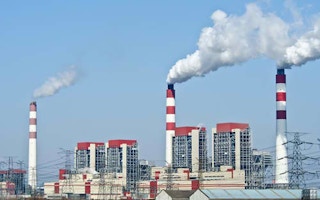Within days of the conclusion of the Paris Agreement at the UN talks in mid-December, two leading US scientists have cast serious doubt on its ability to avert dangerous levels of climate change.
One, James Hansen, says that to think world leaders are doing something significant about the problem is “baloney”, and urges the use of nuclear power and every other form of energy which does not involve the release of carbon.
The other, Michael Mann, argues that the world is “closer to the dangerous 2°C warming mark than many experts acknowledge”, and that continuing global carbon dioxide emissions from human activities at present rates will commit the Earth to 2°C in less than three years from now.
Both men differ substantially on the right way to act, and key parts of their proposals appear too unpopular or too impractical to work. But they do agree that the situation is so urgent that it demands immediate action.
Mann writes: “We don’t have a third of our total carbon budget left to expend…We’ve already expended the vast majority of the budget for remaining under 2°C. And what about 1.5°C stabilisation? We’re already overdrawn.” Hansen believes that “we need all hands on deck”.
Hansen, the former director of NASA’s Goddard Institute of Space Sciences, speaking to the American Geophysical Union, said: “We really have an emergency because of the inertia of the system.”
“A solution is possible, and economic[ally] sensible”, and it’s not being advocated by any nation, said Hansen, who expressed frustration about the outcome of the UN climate conference. The idea that the world is “making good progress” is “baloney.”
His preferred solution is a carbon fee-and-dividend, with all collected fees (taxes) redistributed on an equal per capita basis. Such a system has been backed also by groups such as the Citizens’ Climate Lobby.
Sixty per cent of Americans would make money in that system, he says, because it is the rich members of society who emit more than their individual share of carbon dioxide.
Hansen dismisses as “half-assed and half-baked” the idea that a country like India would cap emissions now, nor could the UN force any country to cap its emissions or tax them. So he suggests a carbon duty on imports, which other countries would have to match out of self-interest.
Right to burn
He is also dismissive about carbon capture and sequestration (CCS) technology, so far unproven at a commercial scale, describing it as “pure unadulterated bull…India and China won’t do it. It’s too expensive, and who wants the CO2 underneath them?”
China and India “have, of course, every right to raise their people out of poverty the same way we did, by burning fossil fuels.”
Restating his well-known championship of nuclear power, Hansen says using fossil fuels is very dangerous by comparison with nuclear power plants.
Mann is director of the Earth System Science Center at Pennsylvania State University. In a closely-argued article, How close are we to “dangerous” planetary warming?, he says the idea that 2015 was the year in which global average temperatures passed the 1°C milestone, halfway to the danger level, is mistaken.
Half-way point passed
He writes of the many reports that “2015 will be the first year where temperatures climbed to 1°C above the pre-industrial. That might make it seem like we’ve got quite a ways to go until we breach the 2°C limit. But the claim is wrong. We exceeded 1°C warming more than a decade ago.”
The world needs to limit net carbon emissions to about 3,000 Gigatons (three trillion tons) of CO2 to have a chance of staying within 2°C. Yet, Mann writes, “We’ve already burned through about 2,000 Gigatons, i.e. we have expended two thirds of our apparent ‘carbon budget’.”
The more the world delays rapid reductions in fossil fuel burning, he argues, the more it will need to offset additional carbon emissions by sequestering atmospheric carbon, either through massive reforestation projects, or with geo-engineering technology such as direct air capture, which involves literally sucking the CO2 back out of the atmosphere.
Mann says: “We’re already close to 1.2°C net warming for the northern hemisphere relative to a true pre-industrial baseline…So what’s the bottom line? Well, we’re actually closer to the dangerous 2°C warming mark than many experts acknowledge. And yet there is still hope for limiting warming to 2°C…”
For him and for Hansen, it seems, the Paris Agreement will work only on conditions that millions will find either unacceptable or unachievable. Nuclear power has few supporters, and carbon capture and storage looks unlikely to succeed.










